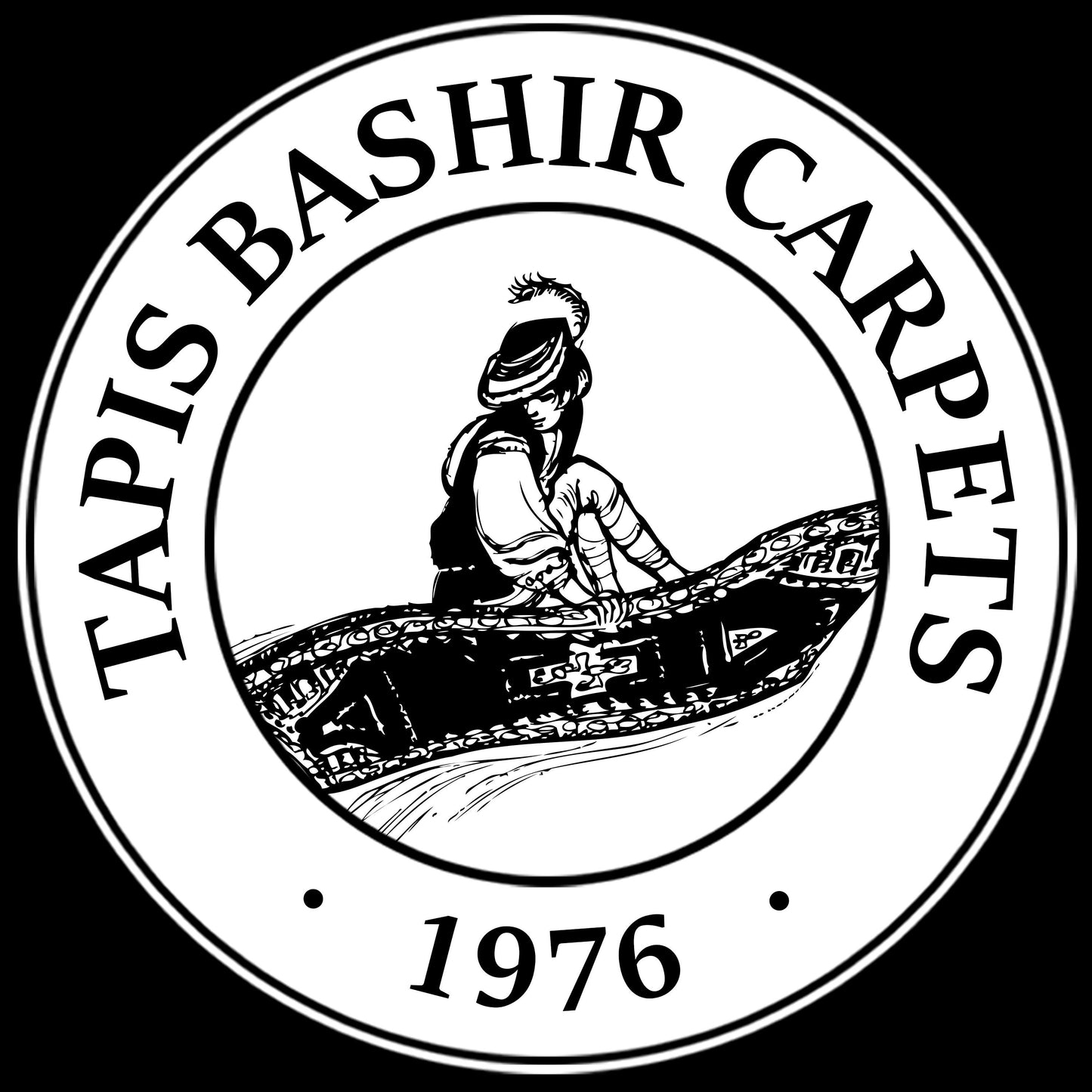Tauris Carpet 12'3" x 9'
Overview
Materials & Craftsmanship:
This fine, diligently hand-knotted area rug contains a perfect blend of 80% pure silk and 20% pure wool. Persian & Oriental rugs made from a high percentage of silk are intricate and are often the most valuable of all handmade carpets. The silk fibers in this piece create a beautiful sheen throughout the field and borders, providing an ultra luxurious feel. The use of silk ensures a precise rendering of the decorative design patterns, since strong silk fibers permit skilled weavers to weave more knots per square inch (KPSI) than those of wool carpets. A typical Persian or Oriental rug made from wool might have between 100 and 300 KPSI - a typical 80% silk rug contains between 200 to 500 KPSI. As a result, weaving the rug will require roughly three times the amount of work, and this is one of the main reasons that silk rugs cost two to three times more than wool rugs. The detailing of this particular piece also contains wool, which increases its durability.
The use of eco-friendly vegetable dyes also enriches the yarn of this area rug with a natural and vibrant luster. Vegetable dyes are also referred to as natural dyes and are superior to "synthetic" dyes. In contrast to rugs woven with synthetic colors, this carpet will last for generations due to the high-quality materials and the skilled craftsmanship invested in it.
A Brief History of Tauris (Tabriz) Rugs
 Tauris is the ancient name of today's modern day city of Tabriz located in north-western Iran. Tabriz has a major weaving tradition dating to the 15th century. It is probably the most prolific carpet-producing center in the world, and certainly one of the oldest. This enchanted city was established more than a thousand years ago. After many invasions, occupations and wars, Tabriz took the ancient techniques of the past and created a huge rug-exporting industry.
Tauris is the ancient name of today's modern day city of Tabriz located in north-western Iran. Tabriz has a major weaving tradition dating to the 15th century. It is probably the most prolific carpet-producing center in the world, and certainly one of the oldest. This enchanted city was established more than a thousand years ago. After many invasions, occupations and wars, Tabriz took the ancient techniques of the past and created a huge rug-exporting industry.
The finest era of Persian rug weaving was the Safavid Dynasty (1499 - 1722), when the Safavids overthrew the Turks who had occupied Tabriz. They gave the city one of the first Royal workshops, making it the artistic center of Persian culture. It was at this time that weavers from Tabriz introduced the curvilinear designs to the courts at Istanbul.
After a decline of a few hundred years, Tabriz began re-establishing its position in the mid 19th century as the market center for the export of Persian rugs to the West. Today, many rugs produced in Tabriz emulate the artistic heritage of the Persian Safavid carpet, and when a designer in any part of the world wants to commission a certain pattern to be hand-woven, Tabriz is the city that he or she visits. To learn more about iranian rugs, please visit our Persian Rugs section.
Sources and inspiration: Bérinstain, Valérie, et al. L'art du tapis dans le monde (The art of carpets in the world). Paris: Mengès, 1996. Print.; Jerrehian Jr., Aram K.A. Oriental Rug Primer. Philadelphia: Running Press, 1980. Print.; Herbert, Janice Summers. Oriental Rugs, New York: Macmillan, 1982. Print.; Hackmack, Adolf. Chinese Carpets and Rugs, Rutland and Tokyo: Tuttle, 1980. Print. ; De Moubray, Amicia, and David Black. Carpets for the home, London: Laurence King Publishing, 1999. Print.; Jacobsen, Charles. Oriental Rugs A Complete Guide, Rutland and Tokyo: Tuttle, 1962. Print.; Bashir, S. (n.d.). Personal interview.; Web site sources and dates of consultation vary (to be confirmed). Without prejudice to official usage.
- Choosing a selection results in a full page refresh.
- Opens in a new window.



 Runner Rugs
Runner Rugs 2x3 Area Rugs
2x3 Area Rugs 3x5 Area Rugs
3x5 Area Rugs 4x6 Area Rugs
4x6 Area Rugs 5x7 Area Rugs
5x7 Area Rugs 6x9 Area Rugs
6x9 Area Rugs 8x10 Area Rugs
8x10 Area Rugs 9x12 Area Rugs
9x12 Area Rugs 10x14 Area Rugs
10x14 Area Rugs Round Rugs
Round Rugs Bath Mats
Bath Mats Doormats
Doormats 12x15 Area Rugs
12x15 Area Rugs




















